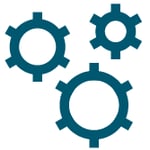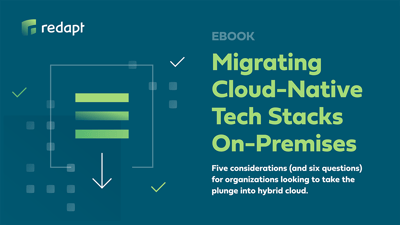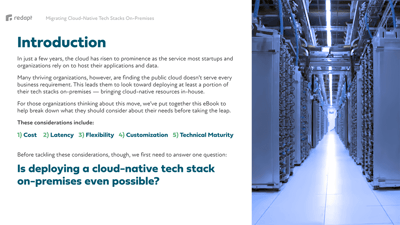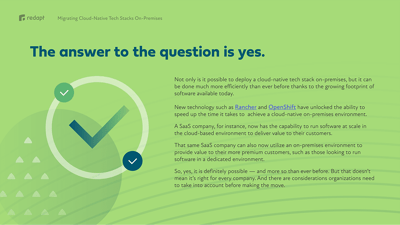As part of our commitment to providing technical clarity for our clients, we monitor and research trends in cloud technology to identify the ones you should care about moving forward.
While tech can be tricky to forecast, we’re already seeing some definite trends that we expect to carry over into the next year and beyond. Here are a few of them.
 Automation
Automation
Who doesn’t want to get more done in a shorter amount of time without the pesky side effects of overwhelm and burnout? We’re all for that.
That’s why we’re excited about the ongoing growth of automation. After all, using it to streamline workflows is only going to grow in popularity in the coming years.
Download Now: Migrating Cloud-Native Tech Stacks On-Premises
Not only does automation lead to greater efficiencies, reduced human errors, and substantial cost savings for companies, it also provides better feedback loops during development. In other words, you can worry less about correcting your team’s mistakes and spend more time focusing on high-priority, high-value tasks for your business.
Key takeaway: Automation is increasingly the go-to solution for companies looking to streamline operations.
Automating with Kubeflow
As it approaches version 1.0, our team is excited about the potential of Kubeflow, the open-source machine learning toolkit for kubernetes.
Given its potential power to make deploying machine learning workflows on Kubernetes, we expect it to be the ingredient needed to better bridge the gap between the work data scientists are doing in the lab and the challenge of getting the models they’re building into production.
Key takeaway: Kubeflow is still in its infancy, but its potential for machine learning is huge.
 The power of containerization
The power of containerization
Containers may be everywhere these days, but when it comes to tapping into their power, many organizations are just scratching the surface.
The meteoric rise of microservices, for example, has been fueled by the rise of containerization. Then there’s the substantial cost savings, portability, and speed of scalability containers provide.
Given the number of capabilities containers have already brought out in terms of supporting and accelerating scalable and portable workloads, we’re excited to see where they take us next.
 Machine learning
Machine learning
The past decade has been a big one for machine learning. Companies are now getting very real use cases for how they can incorporate it into their businesses.
The promise of machine learning goes beyond things like chatbots for customer service. As the potential for it grows, it’s being deployed for everything like imaging processing, video processing, and advanced language processing.
Looking ahead, expect machine learning to receive wider adoption in tandem with cloud-native infrastructure. This should help combat the current trend of 90% of machine learning models not actually making it to production due to a lack of maturity in the systems and resulting unreliability.
For more insights on cloud technology, download our free eBook, Migrating Cloud-Native Tech Stacks On-Premises.
Categories
- Cloud Migration and Adoption
- Enterprise IT and Infrastructure
- Artificial Intelligence and Machine Learning
- Data Management and Analytics
- DevOps and Automation
- Cybersecurity and Compliance
- Application Modernization and Optimization
- Featured
- Managed Services & Cloud Cost Optimization
- News
- Workplace Modernization
- Tech We Like
- AWS
- Social Good News
- Cost Optimization
- Hybrid Cloud Strategy
- NVIDIA
- Application Development
- GPU








